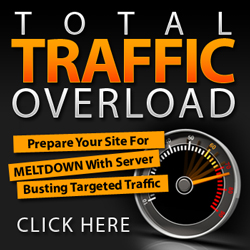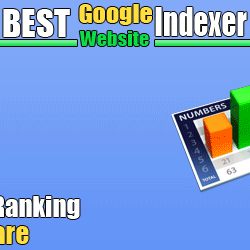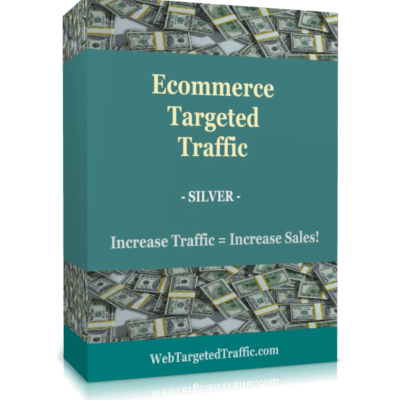It’s crucial to realize that implementing Black Hat SEO tactics and strategies can get your site banned from search engines, excluding you from the number one traffic referral source on the Internet. These practices are against the search engine’s terms of service and can result in the site being banned from the search engine and affiliate sites. A list of tactics and strategies employed by black hat SEO practitioners have been openly denounced on Google’s Webmaster Guidelines and Bing’s Webmaster Guidelines.
To increase your website’s visibility across search engines, it’s important to follow these basic SEO guidelines. In fact, we have 10 SEO secrets that are sure to have an impact on your website’s visibility.
Table of Contents
1. Understand Google’s Ranking Algorithm
It’s no secret that Google is constantly changing its algorithm. They don’t always announce when a change is made; therefore it remains a bit of a mystery. This is still the biggest obstacle to SEO success. Moz has a Google Algorithm Change History that will help you research the changes. The Google Webmaster Central tool is also a good reference.
2. Select the Right SEO Keywords
This SEO secret can literally make or break your Google rankings.
The fact is that there are millions of keywords out there that you can try to rank a page for but you won’t succeed in getting traffic to your site unless you target the “right” keywords.
The right keywords include two things:
- The terms that your site can effectively rank for based on its authority.
- The phrases that are closely related to each other and belong on the same page.
For example, if you have a brand new site with no authority, then you’ll never be able to rank in the top 10 search results on Google for a popular keyword like “car insurance”. It’s just too competitive.
However, you could rank for a longtail keyword such as “how much car insurance do I need in Florida?” without as much effort. That’s because there’s far less competition for a long keyword like that.
What you need to do is pick keywords that match your site’s authority level. And depending on the site’s age, the number of backlinks it has acquired and their quality, you’ll be able to go after easy, medium, or hard keywords. I talk more about this in my post about why is keyword research important.
Now for every page you write, you must choose one to three closely related keywords to target. And then write the page based only on those keywords. Never go off-topic.
If we return to the previous example about Florida car insurance, then a good set of keywords to target for one page could be:
- how much car insurance do I need in Florida
- how does car insurance work in Florida
- Florida car insurance rates by county
3. SSL Encryption
An SSL encryption is a small but mighty SEO secrets tool to consider. Google introduced it in 2014, and it has grown in popularity ever since. The SSL encryption — or “HTTPS” — boosts the security of your website. It’s great for SEO and will keep your visitors’ data safe when they land on your website. Consider activating an SSL encryption if you have an eCommerce website that requires users to enter a username, a password and credit card information to complete a transaction. Your website visitors might not know your site is encrypted with SSL, but you and the search engines crawling your website will. It doesn’t take long to implement, either. All you have to do is call your hosting provider.
3. Structured Data
The thing in our SEO secrets list is structured data. It helps Google decide what search results will appear. This is also referred to as Schema. A combination of ratings, images and locations will improve your site’s ranking and increase its chance of appearing above its competitors.
4. Title Tags
Does each and every page on your website have a title tag? If it does, take a closer look. Title tags should be under 55 characters. The title tag tells Google and other search engines what content is on your website. The keywords should match the content that’s on the webpage. The better the keyword selection, the higher the chance your website will appear when someone searches for what’s on your site. This is one of the main SEO secrets that you need to know!
5. Meta Descriptions
Let’s take a look at some basic SEO for website- Meta descriptions. similar to title tags, set an expectation for what information a person will see when they reach your page. It can improve click-through-rates, which will also improve keyword rankings. A meta description should be no longer than 160 characters.
The language should be compelling with a call-to-action that will entice visitors to visit your website over a competitor’s.
6. Use H1 Headings Properly
The H1 tag isn’t just a piece of bold website text that creates a heading. It is the most important of our SEO secrets list. It sets an expectation for the content that follows. H1 headings should be used at the top of web pages to introduce content and should also include a keyword relevant to your website. This is just basic seo for website that you need to have.
7. Include Canonical Tags
Canonical tags should be used in the header of your coding and is another good tip from our search engine optimization secrets list. This will essentially tell Google that this is the truest version of a respective web page. It makes it harder for a code to be scrapped and eliminates competition from a neighboring website with the same coding. In other words, it helps you avoid having duplicate content on your website.
8. Name All Images and Alt Tags
You need images not only to improve a user’s experience on your website but also because they have a positive impact on your SEO. It’s not enough to simply have images on a website, though. To help with your Google search ranking, come up with creative file names and alt tags which describe what the image is. This content will help Google and other search engines identify what the picture is. The more relevant it is to the search query, the more likely your website will show up.
9. Inspect Your Website for URL 404 Error Code Pages
Your SEO strategy might include links to other websites or pages within your own website. Sometimes pages are no longer available and content is permanently removed from a website. When that happens, website visitors land on a 404 error page. Double-check the links on your website to ensure pages haven’t been taken down without your knowledge.
- If you’ve included links to other blog posts or websites in your content, double-check those as well.
- Simply change the link to another reliable source if the pages have been taken down.
- If your own website has an error page, customize it to match your website’s design.
It’s better to have a custom 404 error code page than to have an empty page — it doesn’t send a good message to search engines or site visitors.
10. Don’t Forget About a Sitemap
Your website needs to be indexed in order for it to show up in search results. A robots.txt file helps you identify which pages you want to have indexed and crawled by search engines. Without this, there might be pages appearing in search engines that are internal, password protected, or not ready to go live. A sitemap tells search engines what pages are where, making it easier for your website to appear properly in search engines. The more detailed your sitemap is, the easier it is for crawling and indexing to occur automatically.
TO DO SEO List
- Simply, Search Engine Optimization (SEO) is the process which helps a website rank high by doing two easy & excellent strategies:-– First, you optimize your entire website.– Secondly, you optimize your web pages one by one.
- Perform a keyword search.
- Take note of how the featured snippet is being displayed. There are three primary types: paragraph, list, and table.
- Copy the existing featured snippet content.
- Go to your webpage and place an H2 tag after the introduction paragraph. Name the H2 as the keyword phrase that you searched for which delivered the snippet.
- Now paste the featured snippet content you copied below the H2.
- Rewrite the featured snippet content so it’s not a duplicate as the one you copied. Be sure to include all of the words that Google put in bold. Google favors those words and it will increase your chances of winning the featured snippet by having them.
- If the featured snippet is a paragraph, then keep it between 45-50 words. Going too short or too long will lower your chances of getting featured in the snippet location.
- Word Count:- If you want your blog will be rank on the search engine result pages, you have to maintain the length of your blog on an average of 1900 words.
- Share on Social Media:- One of the best ways to promote your blog is to share on social media. Facebook and Linkedin groups are the best places to promote your blog.
- Guest Posting: It is a great technique to build niche-relevant links. If you can create high quality & informative content then this one is the easiest and most promising SEO technique.
- Local Citation: If you are targeting the local market then this would be a magical SEO strategy.
- Competitors Links Replication: It could be a little time consuming but generate tremendous results. You just need to do little research and find out how to build the links.
- Here some Free SEO Secret Tools with which you can quickly analyze your website:-Page Speed Insights:- You can Easily Check your Page Speed Score.
Web.dev:- See how well your website performs.
Pingdom:- Test the Website page load time, analyze it, and find bottlenecks.
Byte Check:- Is another tool with which you can check your website speed. - Grammarly:- It is a writing tool that helps you check for many types of errors with its help you efficiently resolve.
- SEO Writing Assistant:- It provides you with instant recommendations for content optimization based on the best article performance.
Real-Time Content Analysis:- If you are using WordPress, you can install their plugin as well, or you can simply check your content just enter the content you’d like to analyze. - URL Inspection Tool:- The URL Inspection tool provides information about Google’s indexed version of a specific page.
- URL checker tool:- You can use this tool to check the URLs
- Ahrefs’ Site Explorer:- Analyzing your competitor in that way, you can find link building opportunities.
- Semrush:- With this tool, you can analyze any domain’s backlink profile.
- W3c:- Markup Validation Services validator checks the markup validity of Web documents in HTML, XHTML, SMIL, MathML.
- SEO audit & Reporting Tool:- SEOptimer is a free SEO Audit Tool that will perform a detailed SEO Analysis and find technical SEO errors.
- SEO Site Checker:- This tool helps to analyze the website and its SEO errors instantly.
- Site Audit:- This is another free tool with which you can audit your site.
SEO Site checker:- site checker pro detect all technical SEO issues in one place, fix them and get more organic traffic, satisfied users, and sales
Targeted Traffic from WebTargetedTraffic automatically monitors and blocks fraudulent clicks on your PPC campaigns without you having to lift a finger. If you’re currently running or planning to run pay per click Ads, then having protection is essential.

















